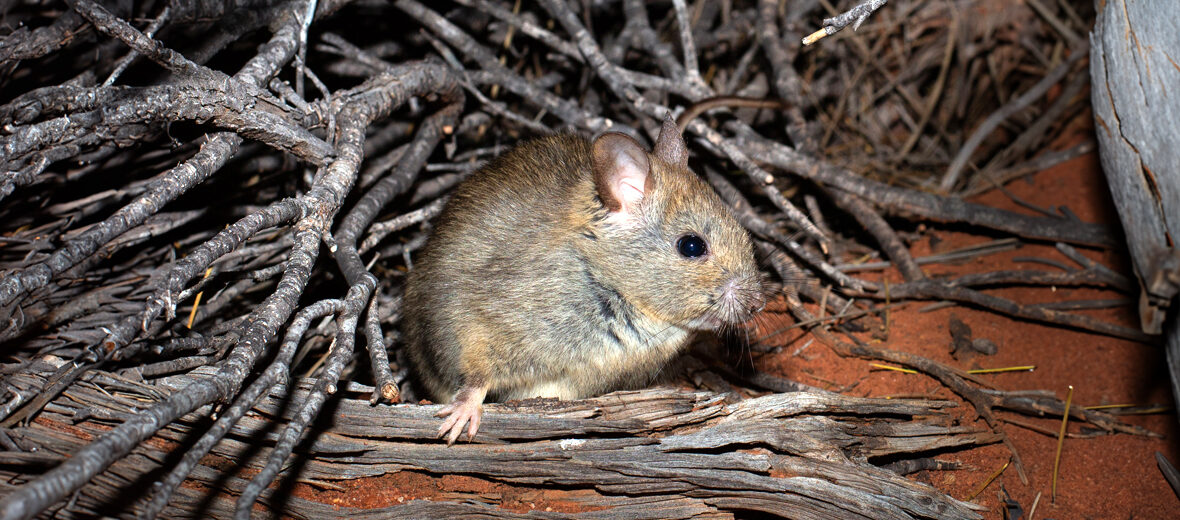
The greater stick-nest rat, aka wopilkara or housebuilding rat, is roughly the size of a small rabbit. These critters were once widely found throughout southern Australia. But now are confined to remote locations such as the Franklin Islands. Reintroduction efforts to other locations have been met with varying levels of success. Unfortunately, they face the threats of invasive species, and with them predation. They also suffer the effects of climate change, which can cause severe droughts and/or flooding. The IUCN lists these rodents as Near Threatened.
First the Stats…
Scientific name: Leporillus conditor
Weight: Up to 15.87 ounces
Length: Up to 10.24 inches, plus up to a 7.09 inch tail
Lifespan: Up to 8 years
Now on to the Facts!
1.) Their population trend, as of 2012, was listed as stable.
2.) Causing the extinction of many other mammals in Australia, cats and foxes have also decimated the stick-nest rat populations over the decades.
3.) Unfortunately, captive efforts to later be reintroduced back into the wild have been met with various diseases and ailments, such as obesity and cataracts.
4.) These critters were first described in 1848 by the explorer Charles Sturt.
5.) Greater stick-nest rats are known to be gentle and passive creatures.
But wait, there’s more on the greater stick-nest rat!
6.) They are generally nocturnal (active at night).
7.) Their diet primarily consists of succulent leaves.
Did you know…?
There are only approximately 4,000 wild individuals remaining, to date.
8.) The nests are constructed of woven sticks and then lined with soft grassy material, and measure approximately 3.28 feet tall by 6.56 feet wide. Some nests are weighted down with rocks.
9.) Besides the invasive animals, dingoes and other large predators prey on these critters.
10.) Mating can occur at any time of the year, but is concentrated between April – May.
But wait, there’s still more on the greater stick-nest rat!
11.) Females undergo up to a 43 day gestation (pregnancy) that yields up to 4 pups.
12.) The preferred habitat for these rodents is dry savanna, with perennial shrublands, particularly consisting of succulent and semi-succulent plants, such as the chenopod and pig-face variety.
Did you know…?
The species is currently being bred in captivity at Monarto Safari Park and Adelaide Zoo, with their offspring being provided to reintroduction projects.
13.) Their unfortunate demise is escalated by mismanaged burning practices, widespread land clearance for agriculture, the introduction of foreign grazing animals like cattle, rabbits, and sheep, and the introduction of exotic predators (like cats, dogs, and red foxes – as mentioned previously).
14.) The reintroduction of these rodents back to the mainland stems from the remaining populations found on the Franklin Islands in the Nuyts Archipelago.
15.) A reintroduced population located at Arid Recovery, a fenced reserve at Roxby Downs in South Australia, lasted for over 20 years, but is now thought to be locally extinct, due to periods of drought, high temperatures, and deterioration of food plants by the over-populated burrowing bettongs.
Now a Short Greater Stick-Nest Rat Video!
Be sure to share & comment below! Also, check out the Critter Science YouTube channel. Videos added regularly!
Want to suggest a critter for me to write about? Let me know here.
Some source material acquired from: Wikipedia & IUCN
Photo credit: Australian Wildlife Conservancy



